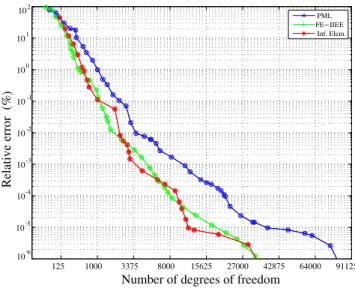A comparison between PML, infinite elements and an iterative BEM as mesh truncation methods for HP self-adaptive procedures in electromagnetics
Texto completo
Figure




Documento similar
To calculate the deformation of the structure, it was used a Finite Element Model for a specific geometry and an evaluation of the variation of the pressure field is done to
a high number of elements in the discretization of the computational domain are required to obtain an accurate numerical simulation of the
In applying the density of finite sums of atoms, we are not making use of the finite atomic decomposition norm (as in Theorem 2.6 for weighted spaces or in the corresponding result
The problems on the arithmetical structure of finite groups ask the following type of questions: In what way does the number of prime divisors of the irreducible character degrees of
K) is the Banach space of continuous functions from Vq to K , equipped with the supremum norm.. be a finite or infinite sequence of elements
No obstante, como esta enfermedad afecta a cada persona de manera diferente, no todas las opciones de cuidado y tratamiento pueden ser apropiadas para cada individuo.. La forma
Comparison of the non-dimensional energy fraction predictions of the front and rear faces between the theoretical and finite element models for: (a) an 8-2 configuration of the
Abstract—The adaptive finite-element method (FEM) is an it- erative variant of the FEM where, in a first step, an initial mesh with few and low-order elements is generated,



